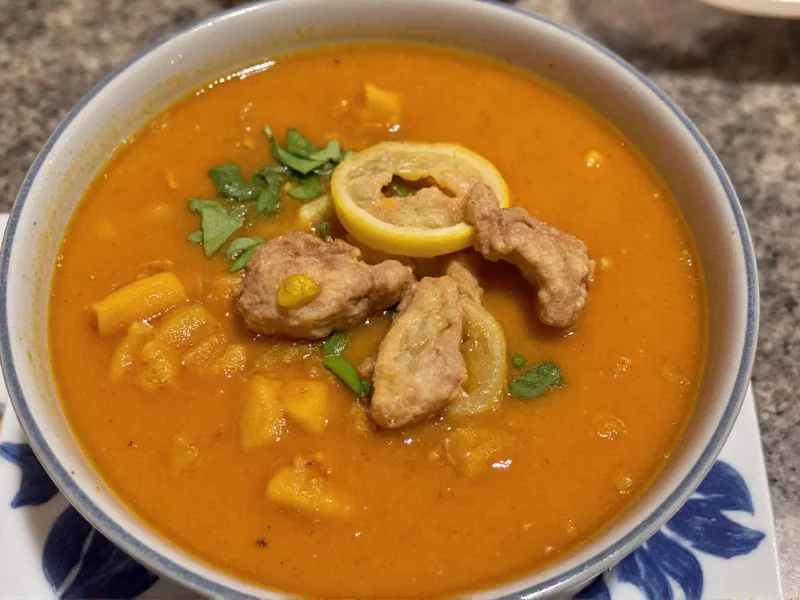Demystifying the “Fling Soup” Misconception
When searching for “fling soup,” you're likely encountering a common linguistic mix-up. The term “pho” (written as ơ in Vietnamese) originates from the French word “pot-au-feu,” a beef stew that influenced Vietnamese cuisine during colonial times. As Vietnamese immigrants brought this dish worldwide, pronunciation challenges led to frequent misinterpretations like “fling soup” or “fuh soup.” Understanding this distinction is crucial for anyone seeking authentic Vietnamese culinary experiences.
What Makes Authentic Pho Unique
True pho stands apart through its meticulous preparation process. The foundation is a clear, deeply flavorful broth simmered for 8-12 hours with beef bones, charred onions, ginger, and signature spices like star anise, cinnamon, and cloves. This slow extraction creates a complex flavor profile that’s both aromatic and balanced. Key components include:
| Component | Traditional Elements | Common Misconceptions |
|---|---|---|
| Broth | Beef or chicken bones simmered with spices | Often confused with generic “Asian soup broth” |
| Noodles | Bánh phố (flat rice noodles) | Mistaken for wheat-based noodles |
| Meat | Raw beef slices cooked in hot broth or pre-cooked chicken | Assumed to include pork or seafood |
| Garnishes | Fresh basil, cilantro, bean sprouts, lime | Often substituted with inappropriate herbs |
Regional Variations and Cultural Significance
Pho’s journey from street food in Hanoi to global phenomenon reveals fascinating regional adaptations. Northern Vietnamese pho (phồ Hà Nội) features wider noodles and a clearer, more delicate broth, while southern style (phồ Sài Gòn) incorporates sweeter notes and more garnishes. This dish transcends mere sustenance—it’s a cultural touchstone representing Vietnamese resilience and culinary artistry. During Tết (Lunar New Year), families often prepare pho as a symbol of prosperity and togetherness.
Avoiding Inauthentic “Pho” Experiences
Many establishments outside Vietnam compromise authenticity through:
- Using broth powder instead of slow-simmered bones
- Substituting rice noodles with wheat-based alternatives
- Overloading with non-traditional ingredients like bok choy or mushrooms
- Serving at incorrect temperatures (pho broth should be piping hot)
When seeking genuine pho, look for restaurants where the broth simmers continuously throughout the day. The best establishments often display their bone stockpots prominently—a hallmark of commitment to traditional preparation methods that distinguish real pho from common misinterpretations like “fling soup.”
Proper Pronunciation and Ordering Guide
Mastering “pho” pronunciation prevents further confusion. It rhymes with “grow” or “fur” (IPA: /fɔː/), not “fling.” When ordering, specify:
- Phồ tái: Rare beef (most common)
- Phồ chính: Combination of rare and well-done beef
- Phồ gà: Chicken pho
Avoid restaurants that spell it “fling soup” on menus—this almost always indicates inauthentic preparation. True Vietnamese establishments use the correct “pho” spelling while accommodating pronunciation challenges for English speakers.
Bringing Authenticity to Your Kitchen
Creating genuine pho at home requires patience but yields rewarding results. Start with quality beef marrow bones, which provide the collagen essential for rich broth. Char whole onions and ginger over open flame before adding to the pot—this caramelization develops complex flavors no powder can replicate. Traditional spice bundles use:
- 3 star anise pods
- 1 cinnamon stick
- 5 cloves
- 1 cardamom pod
- 1 tablespoon coriander seeds
Simmer bones for 6 hours before adding spices, then continue for another 4-6 hours. Skim impurities regularly for crystal-clear broth. While time-intensive, this process honors the dish’s heritage far more than quick “fling soup” shortcuts.











 浙公网安备
33010002000092号
浙公网安备
33010002000092号 浙B2-20120091-4
浙B2-20120091-4